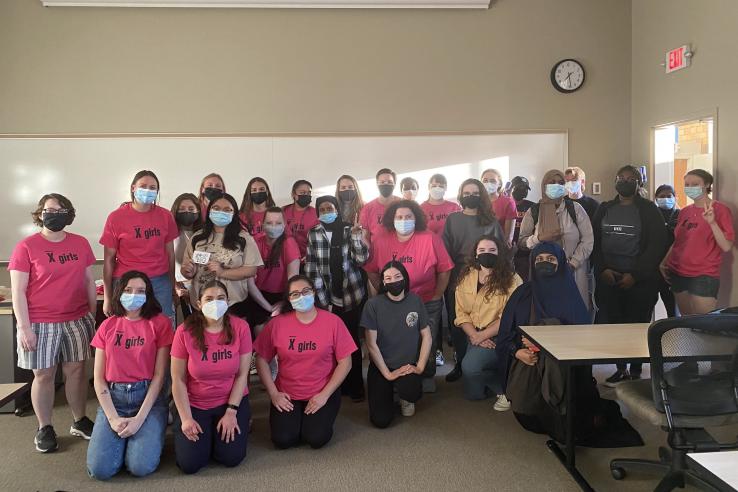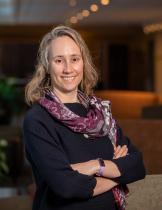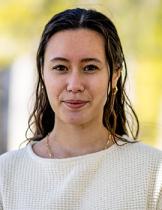
Broadening participation in economics, part three: The Minnesota Center for Diversity in Economics on its history, impact, and pursuit of collaboration

J-PAL North America’s Economic Pathways work aims to expand access to the field of economics at every juncture in the professional pipeline, from high school to tenure. A similar effort was previously referred to as the Economics Transformation Project (ETP).
The Minnesota Center for Diversity in Economics (MCDE), based at St. Catherine University, aims to increase gender and racial diversity in economics through their mentorship program, skills-building workshops, and collaborations with regional partners. In the third part of our four-part series on the collaborations that shaped ETP, Kristine West, the Director of MCDE, discusses the history and impact of the Center.
Why did you first establish the Minnesota Center for Diversity in Economics?
In 2018, a national conversation on representation in economics was stirring. The field was recognizing that it suffers from dramatic underrepresentation of women and people of color—a deficit that is worse in economics than in STEM fields. This discrepancy was reflected in the universities within my home state of Minnesota.
I realized that my university, St. Catherine University, as a women’s college, had unique experiences and resources to support young women and especially young women of color. I also realized that the activities we were already doing to address the underrepresentation of women in economics could be formalized and shared. So I decided to start MCDE to promote and support women and individuals from backgrounds underrepresented in economics at all stages in the economics pipeline.
MCDE aims to promote and support gender and racial diversity in economics. How does it seek to achieve this goal?
Our goal is to not only get women and underrepresented students involved in economics, but to provide them opportunities to lead and influence the direction of our field. It’s the difference between diversity and true inclusion. There are a lot of people interested in getting more diverse individuals at the table. But MCDE—along with other programs like Research in Color and the Sadie Collective—want to make sure that students who are at the table feel like they belong there and that they are setting the agenda.
To advance this work, we focus on four key areas:
- Designing, implementing, and targeting interventions at women aged 16 to 20.
- Continuing to grow opportunities for women and underrepresented students in collaborative research with faculty members.
- Supporting high school teachers’ professional development and giving them the resources they need to reach students and generate interest in economics.
- Building partnerships with other organizations doing similar work and scaling-up interventions in our region. An example of one such partnership is our work with the Minnesota Council on Economic Education, which works with K-12 students across the state. We work with them to develop resources and curriculum for our high schoolers.
How did your own path to becoming an economist influence the work of MCDE?
Before I got my PhD, I taught high school social studies here in Minneapolis. I saw how important it was to get students interested in economics as early as possible and expose them to the power of economics, the breadth of economics, and the excitement that economics holds. The goals of focusing on women in the 16-20 range, which is earlier in the pipeline than other mentorship programs, and training high school teachers are deeply connected to that experience. We should be supporting students well before they show up on a college campus.
Working at St. Catherine's, a women’s college, also shaped my worldview. It’s a profound experience to have a department and student body that’s all women and non-binary students. Working at a place where women hold all the leadership positions certainly informs MCDE’s activities.
To that end, we recently applied for and received a grant from the National Science Foundation to study the role that minority-serving institutions play in diversifying the field of economics, which would include historically Black colleges and universities, as well as women’s colleges like St. Catherine’s that serve a large population of underrepresented students.
How can collaboration with other pipeline programs like ETP promote diversity in the economics field?
As a pipeline program, we are naturally working to get students to the next stage in their career. Some students who participated in our local mentorship program have gone on to work with Research in Color or the Sadie Collective. I see ETP as another program that students can access at different moments in their career.
I am also particularly interested in the curriculum ETP is developing for high school students, and I can see us working together to implement that curriculum regionally.
More generally, it’s fulfilling to have conversations with like-minded organizations, where we can understand what ETP and other partners are currently working on. It’s empowering to know that there are people in Massachusetts interested in the same kinds of questions and interventions we care about. This work takes a village and we should constantly be working together and learning from each other.
Drawing from your work in this space, what lessons have you learned that other similar programs, like ETP, should keep in mind?
Humility towards your students is the main lesson I’ve learned. It’s imperative to center students, particularly young women of color, and ask what they need, rather than assuming it. Then we must do everything in our power to marshal the resources to fulfill those needs.
Our mentorship program reflects this lesson. It’s called the Cross-Generational Female Economics Mentorship Program, and the cross-generational piece is about helping students and alumnae mentor each other—we are promoting two-way relationships. We don’t assume that people who are established in the field inherently know more, and we therefore turn to students to do the mentoring work for each other.
We’ve also learned the importance of building community outside of academic spaces. While students should have spaces that challenge them intellectually, they also need low-stakes spaces to be together and support each other as friends as well as colleagues. While the pandemic has made this work harder, we’ve doubled down on making both physical and virtual spaces like these.
A final piece of advice that will resonate with my fellow economists—incentives matter. Compensating mentors is incredibly important to ensuring our mentorship teams run smoothly. It’s an acknowledgement that what they’re doing is important; that we value their time.
This post is the third in a four-part series exploring the collaborative nature of ETP. The first post discusses the history of ETP and its overarching goals, the second highlights the Kauffman Foundation, a funder of ETP, and their commitment to advancing representation in research. The final post summarizes the design of and research on mentorship programs in economics.
Related Content

Broadening participation in economics, part one: How J-PAL North America's collaborative high school program was built

Broadening participation in economics, part two: The Kauffman Foundation on bolstering representation in research


